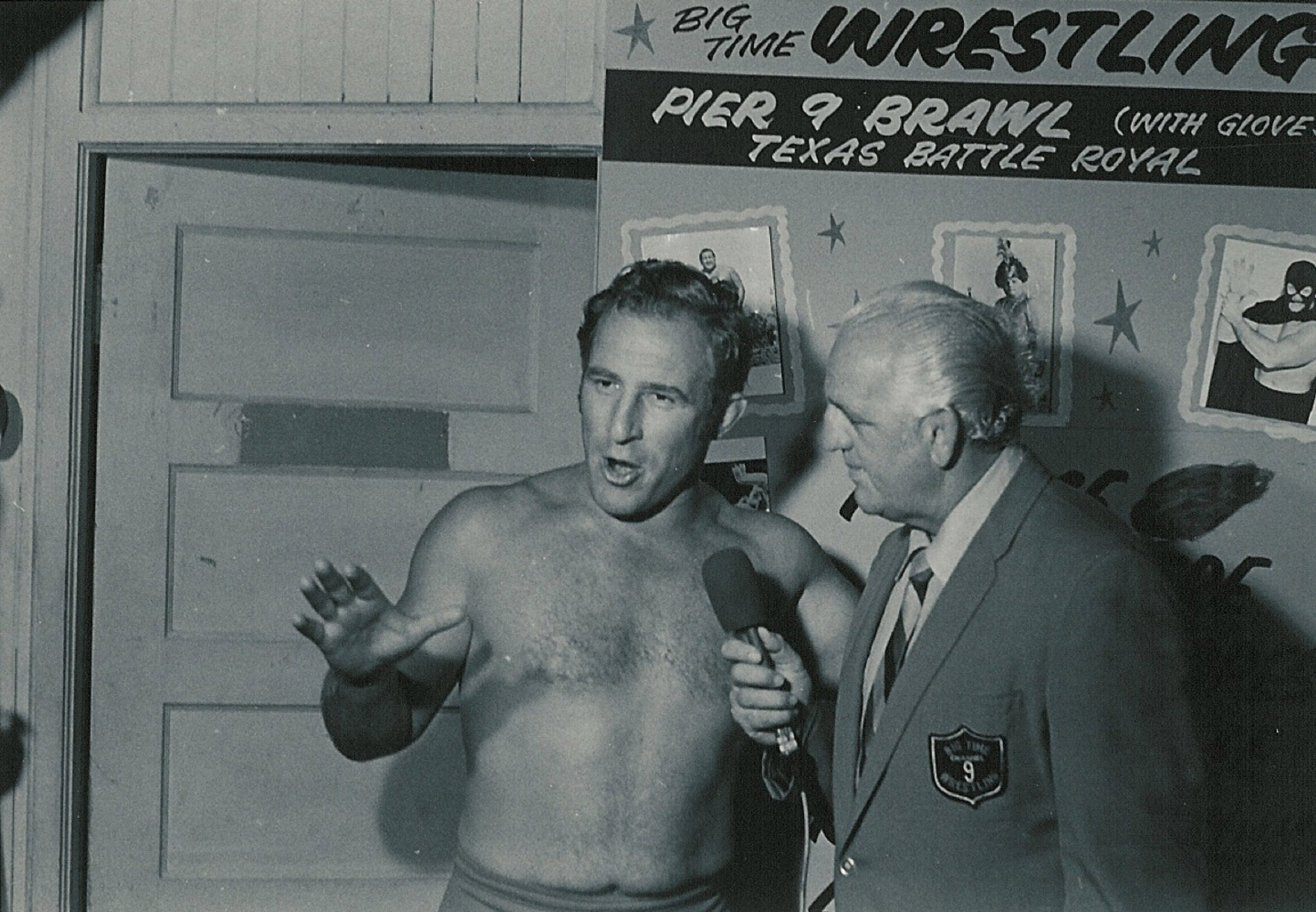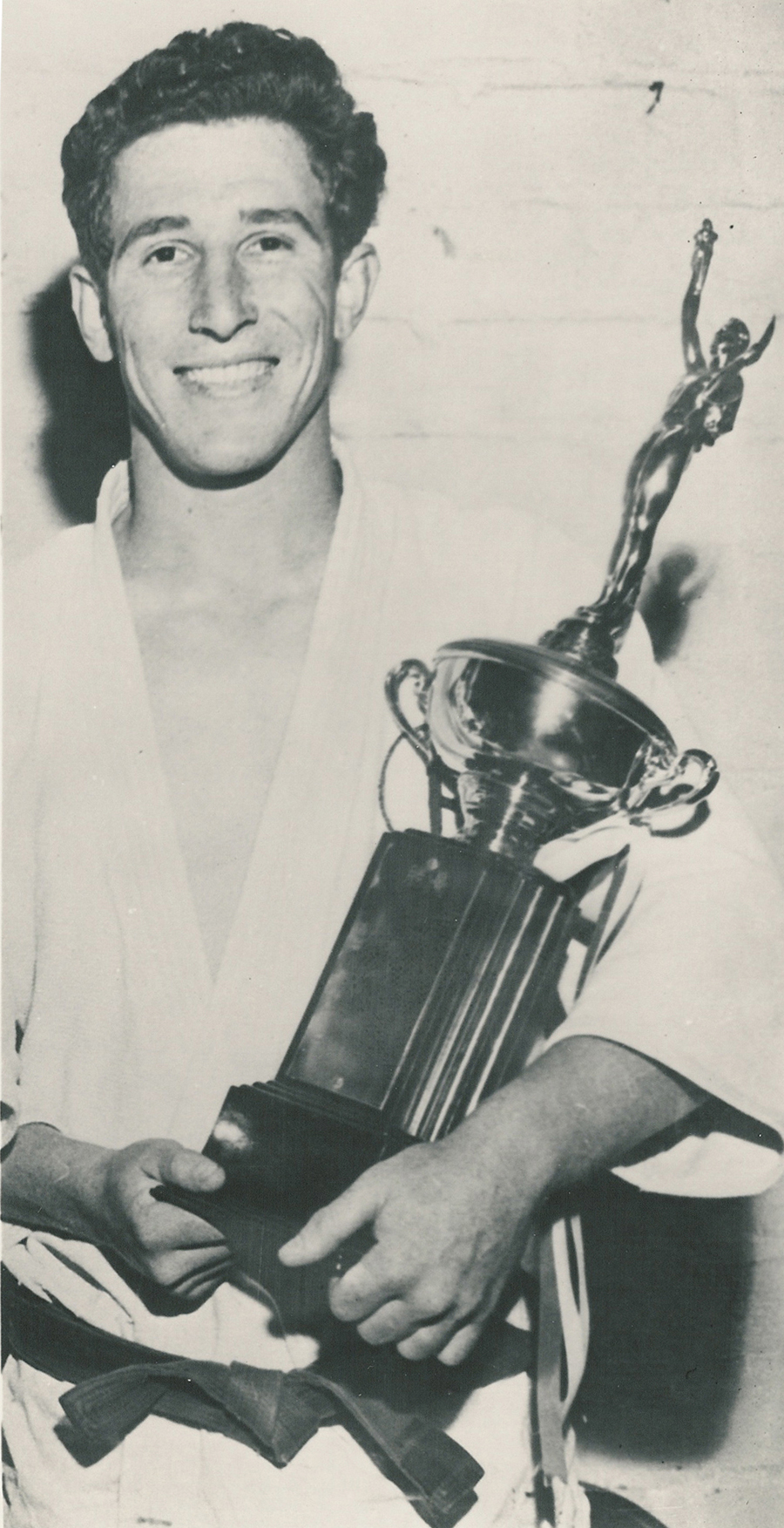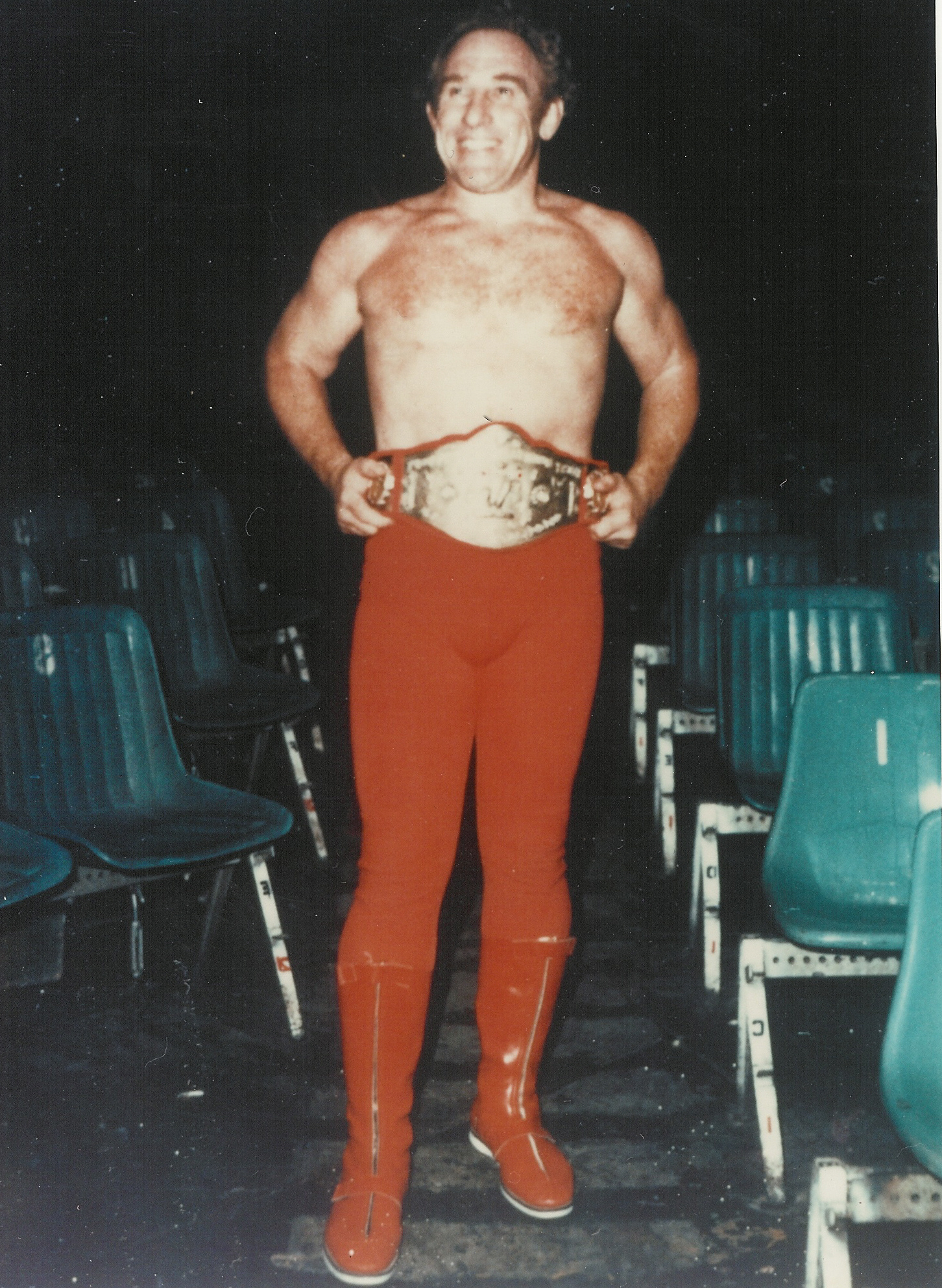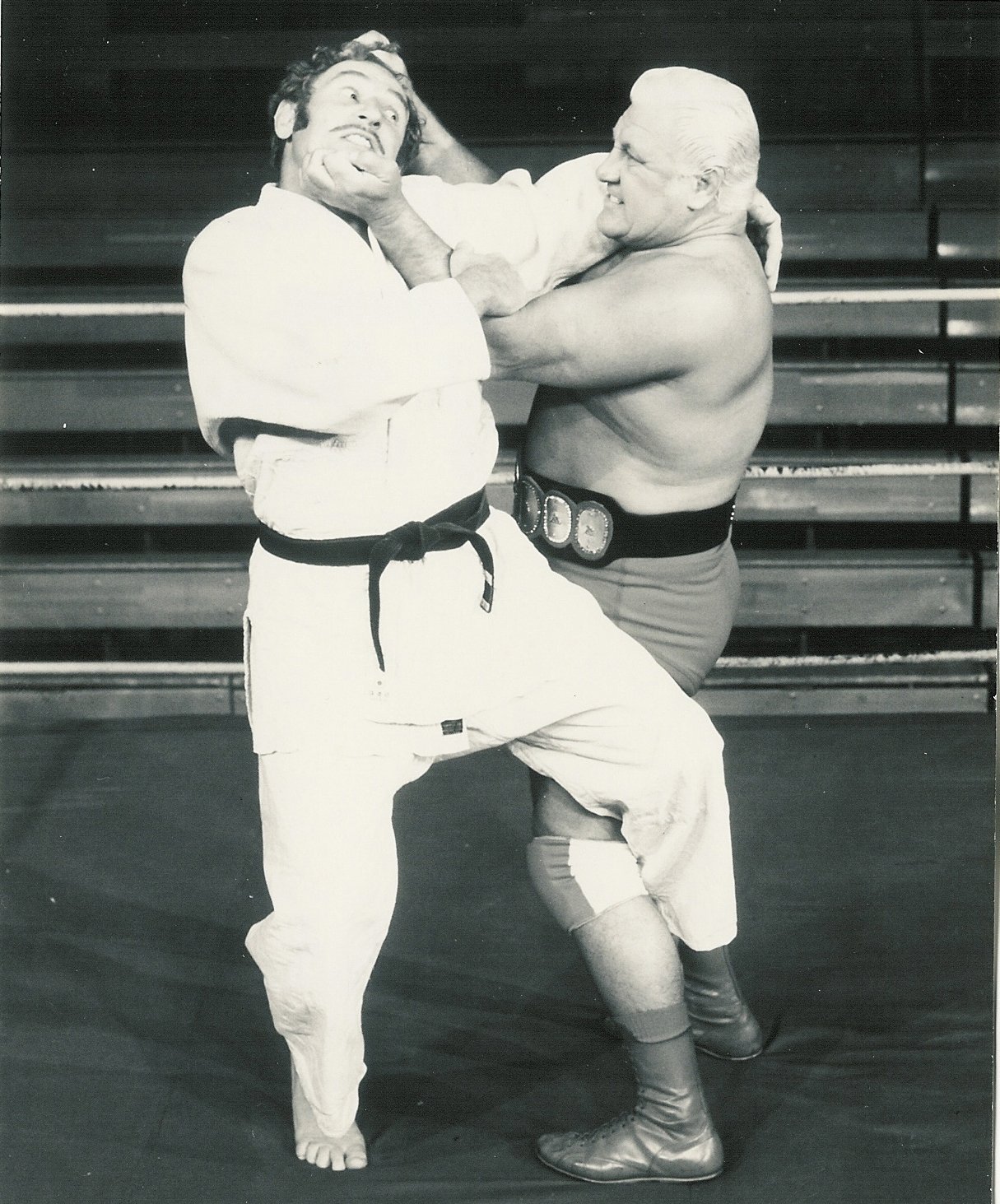Gene LeBell, Last of the Sadistic Bastards, Part One

Ed Lewis. Lou Thesz. Sugar Ray Robinson. Karl Gotch. Billy Robinson. Muhammad Ali. Freddie Blassie. Bruce Lee. Chuck Norris. Roddy Piper. Ronda Rousey.
Those are just some of the names that Gene LeBell has trained with, not to mention the countless other celebrities and luminaries he’s worked alongside during his decades-long careers as a pioneering mixed martial artist, a professional wrestler, and a stuntman. LeBell’s Rolodex is not just one hall of fame roster, but multiple, as he’s played integral roles in the worlds of boxing, judo, wrestling, and Hollywood stunt-work.
Present-day UFC fans probably best remember him from his time spent wielding a stopwatch in the corner of his protege, Ronda Rousey, while wrestling fans might know his name from when Daniel Bryan used to call his finisher the “LeBell Lock.” But despite that, the MMA pioneer isn’t a household name, which is a shame, because if you’re a fan of combat sports, he absolutely should be. That’s why I was so excited for the opportunity to visit his Los Angeles home for a wide-ranging discussion that touched on the entirety of his distinguished career.
“My name is Gene LeBell. G-E-N-E Capital-L-E-Capital-B-E-L-L. One word like McDonald and if you spell it wrong, I’ll burn your house down.”
The 85-year-old wasn’t an easy interview, but not because of his age. He was utterly focused, with an enormous amount to say, and he expected me to pay the utmost attention. He would quiz me on things he’d mentioned earlier or even bits of wrestling and combat sports history, and frequently directed me to turn my voice recorder on and off so that some of his more
violent, scandalous stories could remain secret. LeBell was so intense and demanding that it’s hard to imagine how our conversation would have gone when he was a younger man.
Similarly, when shaking his enormous, still scary strong hands, it was impossible not to think about what a force he must have been inside the ring.
“There’s a few trophies on the shelf, around the world, they could be hero buttons. Things on the wall. They don’t mean anything to anybody but me.”
The inside of LeBell’s house is like a museum, with certificates of achievement in dozens of martial arts disciplines, patches and artwork commissioned during his stuntman days, magazine covers, movie posters, and photos of LeBell with luminaries from the worlds of wrestling, boxing, and Hollywood. But even though he lives his life surrounded by photos of himself with the legends of decades gone past, it’s the photos with and of Ronda Rousey that caused him to light up. It was impossible for him to hide the pride he held for everything she’s accomplished.
“Ronda is the best woman I have ever been associated with, as far as fighting goes. She’ll annihilate, mutilate, assassinate you, and leave you dead on the rug. My kind of people! We got her into MMA because there were no women in her group for fighting, so she went against the men, and she would beat ’em. So, when you see Ronda, tell her Gene sent you, that Uncle Gene sent you. But don’t get her mad. Don’t get her mad…”

It wasn’t just LeBell’s living room that was covered in wrestling and combat sports history, but his entire house, which he led me through, describing each memento in turn, even directing me to read some of the commendations and awards aloud. And after almost every one, what became a familiar refrain over the course of the next four hours: “Not that it means anything.”
I found it an odd thing to say, especially in regard to such a momentous collection, but I had a list of topics to discuss with LeBell and at the time, was more than a little worried about saying the wrong thing and having the interview come to an unceremonious end. So, I got right to it, asking LeBell to tell me about his time training with the legendary grappler, Ed “Strangler” Lewis. The opportunity had been set up by LeBell’s mother, Aileen Eaton, a respected boxing and wrestling promoter in an era when the industry was utterly dominated by men.
“Yeah. To get rid of me my mother sent me down to the LA Athletic Club, and Ed ‘Strangler’ Lewis was there, and if you didn’t call him ‘The Strangler,’ he got mad.”
Lewis – a third of the enormously influential Gold Dust Trio – had retired from in-ring competition by that point, but I was eager to hear about their training, as Lou Thesz raved about Lewis’ unparalleled wrestling abilities even as an older man.
“I was seven! There were like six men and they were all elite fighters. I can’t say ‘wrestlers’ – although they all had cauliflower ears – because they did knees, elbows, boxing…but they called it ‘grappling.’ So he said to me, ‘What do you want to learn? Boxing, Greco-Roman, freestyle, savate or grappling?’ I says, ‘What’s grappling?’ He says, ‘That’s a combination of all of them.’ They showed me holds that they don’t use in MMA because they’re too devastating.”
I’d heard about “hooks” before – wrestling holds that were banned in organized competition and are often closely guarded secrets, passed down like precious family recipes – and it was then that LeBell made the first reference to something he called the “Judo Gene.” At first, I thought he was referring to himself, but by the time I realized he was talking about a specific hold, LeBell had already moved onto discussing the legendary Karl Gotch, and I was wise enough not to interrupt him.
“Karl Gotch was one of my favorites if not my favorite. We’re working out and there’s a guy there that’s on the Olympic team, and Karl’s just beating the living tar out of him and the guy’s begging for mercy. I
sa id, ‘Why did you do that?’ And he says, ‘When I was young, I wrestled easy with a guy, maybe about 20 or 30 minutes, and I didn’t try to beat him, and they put in the paper that the great Karl Gotch couldn’t even beat him. After that, every guy I worked with, they gotta know who the boss is.'”

If you’ve ever enjoyed Japanese wrestling, you should say a little prayer of thanks to Karl Gotch, known as Kamisama in Japan, which translates to “God of Wrestling.” After training with Billy Riley in the original Snake Pit in England, Gotch traveled to the United States and finally Japan, where he was an instrumental part of the founding of Antonio Inoki’s New Japan Pro-Wrestling and the development of “strong style” wrestling, a blend of martial arts and catch wrestling.
“I’ve seen Gotch hurt a lot of people in the ring and I used to just watch him. ‘Here’s a guy I don’t like.’ He’d just have them for lunch, which I thought was kind of entertaining ’cause my elevator didn’t go to the top, so I was in good company. The holds he did were practical, devastating and sadistic. Guys years ago, they used to take boats and travel to Russia, Canada, Europe, England, all over the world. They’d learn a hold and improve on it.”
Then, LeBell told me to turn my recorder off and spoke to me again, in somewhat less oblique terms, about the “Judo Gene” hold and how utterly devastating it is. He mentioned that it was indicative of his being a Sadistic Bastard, which more than just an apt descriptor, was a level of achievement, one that he valued more than any black belt, as it was a rare distinction bestowed upon him by Karl Gotch himself. The rank or title – however you want to view it – is a nod to the fact that to be a real problem or threat, you need something beyond talent and skill and strength. You need to be willing to go further and do more damage than anyone else…you need to be a Sadistic Bastard. I gently requested permission to turn my recorder back on, and LeBell allowed it, just in time for me to catch a few final words on Gotch and the Sadistic Bastard distinction.

“Karl Gotch was my favorite because he promoted me to Sadistic Bastard. Sadistic Bastards can really take care of themselves, and there were only a few of ’em, including Karl Gotch, Lou Thesz, Vic Christy, and me.”
With the way that he raved about Rousey, I was eager to find out whether she made the grade for Sadistic Bastard.
“About half. She’s a lot better than any of her opponents and she realizes, ‘I don’t have to go that far to get a win.’ Not so much with Ronda, because she’s in a class by herself, but when they give you a rough time in pro wrestling (because everybody wants to be a star), then you’ve got to have the ability to hurt somebody, and she definitely does.”
I’d spent a couple hours with Gene LeBell by this point, following him around his house filled with martial arts trophies and certificates, looking at pictures of him hurting people, listening to stories about him hurting people, and carefully trying to avoid any conversational missteps. But throughout our time together, he continued to repeat variations on the same sardonic phrase, one that seemed at odds with all that he had accomplished: “Not that it matters.” But finally, after all that time together, a crack in the facade of the legendary sadistic bastard, as he told me what truly does matter to him:
“I don’t get into the politics because everybody hates everybody else. A hundred years from now, nobody will know the difference, you know? You just take care of the ones that you love, and are in your corner when you need it. Ronda and Travis [Browne], anything I can do for them…to me, they’re family. And as for you, I never did like you.”
Check back next week for part two of our interview with the legendary Gene LeBell, in which we discuss judo and his infamous pink gi, training with Bruce Lee and Roddy Piper, comparisons between wrestling and mixed martial arts, and the devastating “Judo Gene” hold.
Aubrey Sitterson is the author of The Comic Book Story of Professional Wrestling, available wherever books are sold. You can find him at his website or babbling on Twitter.